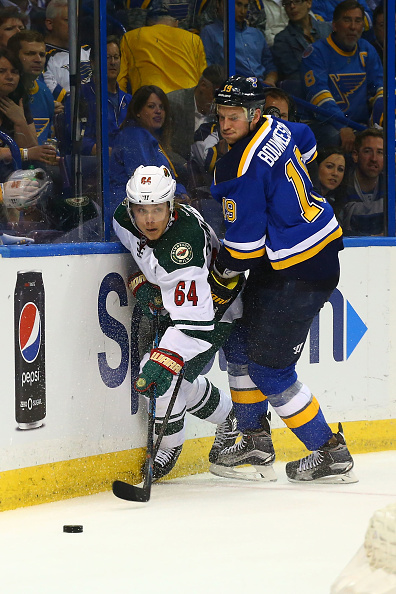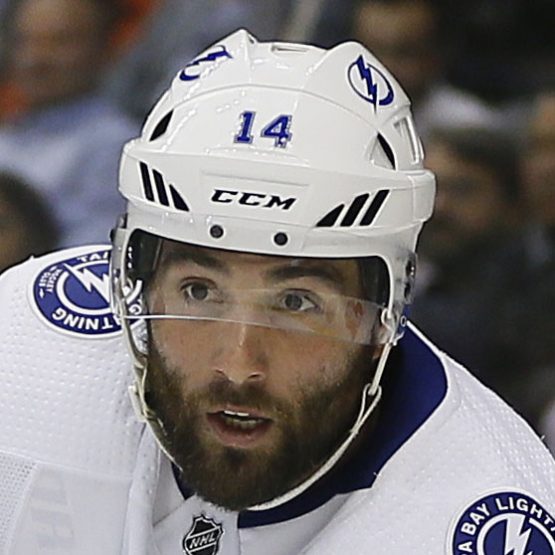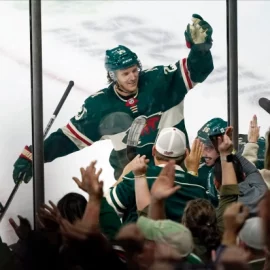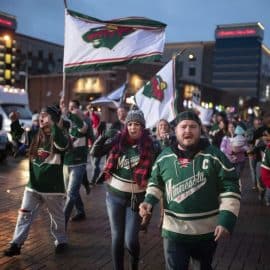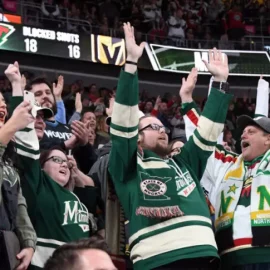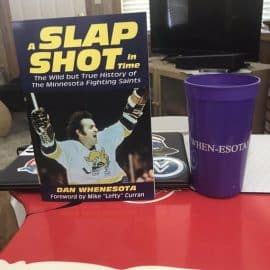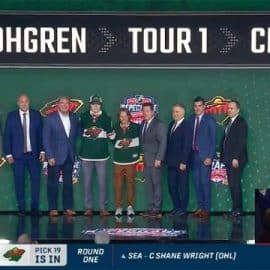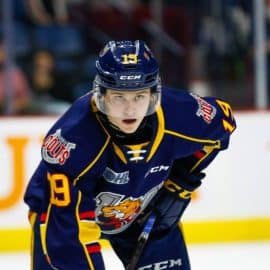The Stock Market game, perhaps one of my favorite memories from my junior high days. In 8th grade, our Social Studies teacher (and stock market investor) Charlie Schuldt had us make groups of 4 students where we participated in a fictional stock market game where we had $100,000 to spend on stocks. We loved it, making deals and speculating on which stocks were going to push our group to the top of our class list (which I’m proud to say we achieved). Later, when I eventually became a Social Studies teacher myself I had one of my classes participate in an online stock market game run by the Wall Street Journal and the students couldn’t get enough of it. They loved wheeling and dealing that comes with trading stock and with fictional money its a no risk deal. I emphasized the old axiom of the stock market which is “buy low, sell high.” Mr. Schuldt would repeat that phrase over and over but its a sound strategy even if it does take some instinct to know when the right time to buy and sell is. I still remember reading that as part of Phil Housely‘s bio in one of his last seasons in the NHL (with Chicago) when he was asked what was the best advice he ever received where he repeated that basic stock market mantra.
The Minnesota Wild, coming off its best season in franchise history and with a number of players enjoying their best seasons may wish to take advantage of that stock market based axiom this summer. Buy low, sell high. With the Expansion Draft and the arrival of the Vegas Golden Knights it should make for a dynamic trading environment that will send prices higher. Younger players like Mikael Granlund, Nino Niederreiter, Charlie Coyle, Jonas Brodin, Mathew Dumba, Erik Haula and Marco Scandella all could attract some interest this summer and yield picks, prospects and give the team some cap space let alone a chance to reshape itself.
Its precisely why I think this might be the summer to sell and sell big. According to CapFriendly.com, the Minnesota Wild have 15 players signed for next season. The Wild have 5 restricted free agents (Granlund, Niederreiter, Haula, Folin and Schroeder) among players that played regular minutes with the big club and you could almost say 7 RFA’s if you count Mike Reilly and Gustav Olofsson. Those players are going to be expensive and with just $11.5 million in cap space proving the cap ceiling doesn’t go up much than the $73 million it was this season (as expected) its tough to see how they’d be able to afford more than two of them if they picked top 5 scorers Granlund and Niederreiter to say nothing of filling out the rest of their roster. This is another reason why I could see this team dealing players like Coyle, Brodin or Scandella for picks to gain around $7-8 million in cap space to give them the room to keep a player or swing a player for player deal.
Unrestricted free agents Martin Hanzal, Ryan White, Nate Prosser, Victor Bartley and Darcy Kuemper will probably all be allowed to walk. That makes the king’s ransom the team paid for Hanzal and White that much more painful. Minnesota will be without a 1st round and a 2nd round pick in this year’s draft and a 2nd round pick in next year’s draft. 1st and 2nd round picks are normally your best shot at finding quality roster players and the Wild have parted ways with those selections quite a few times as they’ve been in ‘win now’ mode with its aging core of 30-something talent.
Another ancillary reason for trading lots of their young core is to provide room in prime spots for its prospects to have a chance to play in the roles for which they are best suited. Alex Tuch, Luke Kunin, Joel Eriksson Ek should be somewhere on the Wild’s top 6 and if we were to keep all of that young group around I don’t see how you could put them in those roles. Kirill Kaprizov, arguably one of the team’s most intriguing prospects has another year in the Kontinental Hockey League but he’s another Top 6 talent and I’m sure he’d feel a lot better about coming to North America if he could see the potential for a Top 6 spot on the team’s roster. Another interesting prospect is Jordan Greenway. Greenway surprised just about everyone in deciding not to go pro after his sophomore season at Boston University. Even his close advisors said they did not expect that decision from the 6’5″, 230lbs winger, but my guess is he probably looked at the team’s roster and figured he had no chance to play. One of the biggest failings of the Wild in the post-season was having a player who was willing to camp out near the crease and that’s Greenway’s game and it’d be a shame to lose him because he thinks he doesn’t have a place in the organization.
So what do Wild fans think?
[protected-iframe id=”4e038122ea8781ba80f8dca4f9f60d9f-114320562-107882219″ info=”hash” class=”twitter-tweet”]I posted a small Twitter poll a few days ago and didn’t get a lot of votes, but there certainly appears to be some division in the camp. While “we’re close” won out by a narrow margin, are we really? Even Zach Parise hinted Yahoo!‘s Sean Leahy that the team seems to be in a pattern of good enough to get to the playoffs but not good enough to do much more. His interview, beyond the shameless chocolate milk promotion came off as mostly apathetic and a guy ok with going through the motions. Yet he says that with the security of a no movement clause and 8 more seasons under contract (and yes that NMC goes to the end of the contract). So how motivated would you really be to change when you know no matter what you don’t have to?
I’d say that mindset is likely true with some of the other older veteran core that have big contracts and no movement clauses like Ryan Suter, Mikko Koivu and Jason Pominville. While it has been speculated by former ESPN‘s Pierre LeBrun that the team will ask Pominville to waive his no movement clause for the expansion draft so they can try to protect another younger player, but why would he? He negotiated that part of his contract in good faith and even though he’s underperformed he has no reason to do the Wild a favor and voluntarily take his name off the protected list even if it is unlikely the Vegas Golden Knights will select him. So how are you going to try to change the culture of this team if its seen as being kind of stuck in the rut of ‘just going through the motions.’?
The younger core of the Wild (Granlund, Coyle, Scandella, Dumba, Niederreiter, Haula, Zucker and Brodin) have all been on the club the last 3-4 years and that ‘going through the motions’ attitude has permeated this group. The team simply cannot afford them all so perhaps its time to cut bait with some of the players who may not be of the right fit for this club. Some of them are RFA’s and bringing them back is problematic as I pointed out earlier but some are under contract for the next few seasons and trading them can give the team some much-needed cap space or a chance to lockdown a player or two the organization really likes. In addition, since some of these players are coming off some of their better years it might be the ideal time to deal them and get maximum value in return while their market value might be at its peak.
So in the spirit of the stock market I am going to put together a little prospectus of the Wild’s most trade-able assets beyond just restricted free agents. In parentheses I will give my assessment on the player’s value trajectory after this season.
F – Charlie Coyle (Trajectory: On the Rise) ~ The power forward broke the 50-point plateau this year (56 points in 82 games) and at $3.2 million his cap hit through 2019-2020 is attractive he has a tendency to leave you wanting more. Most of Coyle’s production came in the 1st half of the season, and while some may say that’s all the more reason you would want to keep him there are still points that make you wonder just how high his ceiling really will be. Coyle may be a power forward in body type, he spent lots of time towards the latter half the season being more of a perimeter player and rarely taking the puck to the tough areas of the ice.
Why Trade Him? The East Weymouth, Massachusetts native was 8th on the Wild in shots on goal despite logging the 5th most ice time among Wild forwards which means he’s not choosing the pull the trigger nearly enough. Lots has been made of his strength and off-ice training but when will that translate to some snarl to his game or is the team satisfied with the guy who plays like a power forward only once in a while? If you think he’s plateaued then you may part with him and get the best value you can. Yet on the flip side, why deal away player with a reasonable contract that’s signed for the next 3 seasons?
D – Mathew Dumba (Trajectory: Up & Down) ~ The offensive-minded defenseman is just 22 years old and is a restricted free agent this summer. He’ll be looking for a significant pay raise this summer which the Wild may not be able to afford for a player who plays on its 3rd defensive pairing. While Dumba provides mobility and shown flashes of his offensive abilities there are concerns about his defensive game which can be anywhere from uninspired to aloof. Is it just a sign of his youth that he’s going through these growing pains or is he on the cusp of putting it together to be able to give the Wild a true gamebreaker on their blueline?
Why Trade Him? One of the major debate among Wild fans is just how hockey smart is Mathew Dumba? The team has had a few seasons to assess his play and will it be worth paying him $4 million+ for a season for an offensive defenseman with issues in his own end? The risk of course is dealing him away and watching him flourish into a superstar ala Brent Burns did for San Jose. Dumba certainly is a talent that will likely intrigue other general managers and you might benefit from a bidding war allowing you to get maximum return which should make Chuck Fletcher at least want to dangle him to see what kind of offers come his way.
D – Jonas Brodin (Trajectory: Slight Rise) ~ when Jonas Brodin first arrived to the NHL during the 2012-13 season people were amazed at the tremendous poise the gangly defenseman demonstrated playing alongside Ryan Suter. He seemed to think the game one step ahead and his mobility meant he was rarely caught out of position. The team gave Brodin a $4.1 million contract that will last through the 2020-21 season. While he’ll probably never be a big offensive producer, he’s a steady puck mover and has shown some flashes of offensive ability at the point. Brodin spent a good chunk of the season on the 3rd pairing along side a variety of other defenseman, but is that really where he should be? He had a career-best season this year but a rough playoff performance has some Wild fans wondering if he’s good enough to help lead Minnesota out of playoff mediocrity.
Why Trade Him? About 6 months ago, virtually every mock expansion draft had Brodin as the player the Vegas Golden Knights would select from the Wild. That either is an indication that he’s considered a valuable, top 4 defenseman for the Knights or seen as an expendable part of the Wild defense corps. Brodin for the most part plays a steady if unsexy game and if the team really believes Gustav Olofsson who is far cheaper, younger and taller can play a similar game you may look to shop him. He has been named in trade rumors the last few seasons, but will this summer finally be the year he gets dealt?
LW – Jason Zucker (Trajectory: Steady Rise) ~ Wild fans got excited just a few months after we drafted Zucker in the 2nd round in 2010 as he had a strong freshman season with the then-WCHA Denver Pioneers. Zucker appeared to combine speed and scoring in such a way the organization hadn’t seen since it had Marian Gaborik. He followed up a strong college career with a solid season in Iowa where he was the team’s leading scorer. Whenever he would get a chance with the Wild, he’d dazzle fans with his wheels and scoring but the coaching staff soured on his lack of detail in the defensive zone so they limited his minutes. He would commit himself to playing better defense and work his way up from the 4th line in the 2015-16 season. One intangible Zucker brings is an energy level to a team that often seems to lack emotion and even though that confidence may have put him in the doghouse, it also has made him a fan favorite. This season, he had a breakthrough season with 22 goals and 47 points playing on a line with Granlund and Koivu where they were arguably the team’s most dangerous line a for most of the year. A sports hernia injury slowed him down late in the season and in the playoffs but he appears to have lots of potential.
Why Trade Him? Much was made of Jason Zucker as being the first Las Vegas-trained player to make it to the NHL, and now with an expansion team in his hometown there is the potential to make a deal to bring their hometown talent in for their inaugural season. While Wild fans will miss Zucker’s speed, scoring and energy the truth is he’s in for a big pay day the team likely cannot afford after the 2017-18 season. The organization has at least one (maybe two) speedy winger with moxie and scoring touch and maybe this is trading chip the team uses to protect a player it doesn’t want to part with but cannot protect.
RW – Nino Niederreiter (Trajectory: climbing steadily) ~ the Swiss winger has been among the Wild’s top goal scorers the last 3 seasons as he’s surpassed 20 in each of them. Niederreiter is one of the few players the Wild have that is a threat score from the faceoff dot with his terrific release. Unfortunately he is notoriously streaky and when he isn’t scoring sometimes the other parts of his game get exposed. While his feisty nature at times allows him to be a bit of an agitator he is not a big punishing hitter even though he led the team in hits this season with a 120. He was a steal from the Islanders and we can only guess why he doesn’t get more power play time than he already does. Niederreiter is a restricted free agent and has done just about everything the organization has asked of him.
Why Trade Him? Similar to Jason Zucker, the team just may not be able to afford him. While Niederreiter hits and moves well as 6’2″ winger, he’s not quite the junkyard dog we need in the post-season. However, he’s a player with good potential and he’s proven his 24 goal season in 2014-15 wasn’t a fluke with two more 20+ goal campaigns. The 24-year old is durable too as he’s only missed 3 games the last 4 seasons but its tough to ignore how he disappeared in this year’s playoffs. His scoring potential would surely attract some interest so you make a trade to get what value you can for a player you likely may not be able to afford.
D – Marco Scandella (Trajectory: declining steadily) ~ It hasn’t quite turned out as expected for a player once thought to possess a skillset similar to a young Brent Burns. Scandella isn’t nearly as eccentric as the Sharks’ superstar, and only exhibits a few flashes of that potential which makes for kind of a love / hate relationship with the young defenseman’s game. When he’s on, he’s physically assertive and picking his spots well to jump into the attack where his excellent mobility really stands out. But unfortunately he’s often erratic at both ends and doesn’t pick his spots well which results in the team being caught on the counter attack. His offensive production has tailed off considerably as his 13 points this season was just a little over half of the previous season’s total.
Why Trade Him? At this point, it might simply be to cut bait and hope to get cap relief. The Wild are paying Scandella $4 million a season (until 2019-20) to be a mediocre 2nd pairing defenseman. While that may not be much to entice buyers, he’s just 26 years old and maybe in a different role he could thrive again.
C/RW – Mikael Granlund (Trajectory: Soaring) ~ No player on the Wild had a bigger improvement from his previous season than Granlund who led the team in goal scoring (26) and points (69). Making the move from center to wing was immensely beneficial and his improved comfort level was evident on the scoresheet as well in overall impact where he was strong at both ends of the ice. Granlund was outstanding on a line with Zucker and Koivu where they were the team’s best line most nights. A broken hand sabotaged his playoffs but he finally demonstrated the dominance that had been promise when the team drafted him 9th Overall in 2010. Unless this season was a fluke, it appears he’s ready to take his place as the centerpiece of the Wild’s attack. No doubt the Wild will try to do whatever it can to keep him in the fold and his contract will probably be given top priority.
Why Trade Him? Granlund, a restricted free agent is going to demand a hefty payday now but if that asking price is too high they might be best served by trading him while his value is clearly at its highest. He may not have the big shot or a dazzling array of 1-on-1 moves but his instincts and the assertiveness is what really took a major step forward and I would think Granlund would have to be asking an insane amount in order for the Wild to balk on re-signing their budding star player.
So who is available? With the expansion draft a lot of teams are going to be looking to re-shape themselves. Teams I’d look at that might be looking to make some significant alterations would be the New York Islanders, Florida Panthers, New York Rangers, and Philadelphia Flyers may be organizations wanting to swap these mid-ranged contracts.
Add The Sports Daily to your Google News Feed!
